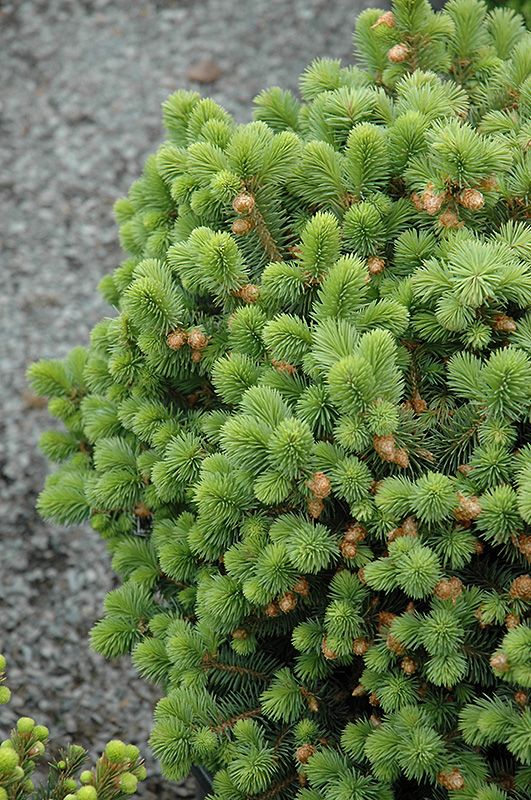Roundabout Blue Spruce
Picea pungens 'Roundabout'
Height: 4 feet
Spread: 4 feet
Sunlight:
![]()
Hardiness Zone: 2a
Other Names: Blue Colorado Spruce;Colorado Blue Spruce
Description:
A highlighted blue-green rounded habit that is densly branched and profusely budded; needles regularly puff out with a second flush in mid summer and there is contrast between new and old foliage; continuously lush in apperance and low maintenance
Ornamental Features
Roundabout Blue Spruce is a dwarf conifer which is primarily valued in the landscape or garden for its ornamental globe-shaped form. It has attractive bluish-green evergreen foliage which emerges light green in spring. The needles are highly ornamental and remain bluish-green throughout the winter.
Landscape Attributes
Roundabout Blue Spruce is a dense multi-stemmed evergreen shrub with a more or less rounded form. Its relatively fine texture sets it apart from other landscape plants with less refined foliage.
This is a relatively low maintenance shrub. When pruning is necessary, it is recommended to only trim back the new growth of the current season, other than to remove any dieback. Deer don't particularly care for this plant and will usually leave it alone in favor of tastier treats. It has no significant negative characteristics.
Roundabout Blue Spruce is recommended for the following landscape applications;
- Mass Planting
- General Garden Use
Planting & Growing
Roundabout Blue Spruce will grow to be about 4 feet tall at maturity, with a spread of 4 feet. It tends to fill out right to the ground and therefore doesn't necessarily require facer plants in front. It grows at a slow rate, and under ideal conditions can be expected to live for 60 years or more.
This shrub should only be grown in full sunlight. It is very adaptable to both dry and moist growing conditions, but will not tolerate any standing water. It is considered to be drought-tolerant, and thus makes an ideal choice for xeriscaping or the moisture-conserving landscape. It is not particular as to soil type or pH, and is able to handle environmental salt. It is highly tolerant of urban pollution and will even thrive in inner city environments. This is a selection of a native North American species.


